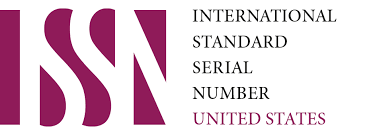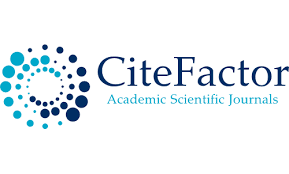School Strategies in Realizing Student Wellbeing in Public Senior High School 1 Gorontalo
Keywords:
Strategy, Student Wellbeing, Meeting ClassAbstract
This study aims to 1) describe the school program in realizing student wellbeing in SMA Negeri 1 Gorontalo, 2) describe the strategies of principals and teachers in realizing student wellbeing in Public Senior High School 1 Gorontalo. The approach used in this study uses a qualitative approach with the type of case study research. Data collection techniques in this study using interviews, observation and documentation. As for the results in this study, there are several programs and strategies carried out to fulfill the aspects of having, loving, being, and health in realizing student wellbeing "in the school environment can make students well-being because Public Senior High School 1 Gorontalo implements environmental development programs, green schools, banks garbage, adiwiyata, 5S culture and habituation program, bullying prevention, decision making, class meeting, extracurricular, UKS, PMR and PKR.
References
Mappiare, A. (2018). Fundamentals of Qualitative Research Methodology for Social and Professional Sciences. Malang: Jenggala Main Library.
Aris, A., & Djamhoer. (2017). Descriptive Study of Student Well Being in Homeschooling Heirs Bandung Junior High School Students. Psychology Proceedings
Ahmad, T. (2017). Introduction to Research Methods, Yogya:Teras
Abdurrahman, Mulyono. (2018). Children with Learning Difficulties. Rineka Cipta: Jakarta
Riyanto, B. (2019). Fundamentals of Spending, Edition 4, Yogyakarta:
BPFE
Burhan, B. (2017). Research Data Analysis. Jakarta: PT Raja Grafindo Persada
Budio, S. (2019). School Management Strategy. Organizing Journal. Vol. 2 (2).
Ministry of Education and Culture RI, Great Dictionary of Indonesia Jakarta: Balai Pustaka.
Djamaludin. (2019). Psychology of Leadership and Innovation. Yogyakarta: Erlangga
Diener, E. (2007). Culture and subjective well-being. In S. Kitayama & D. Cohen (Eds.), Journal Handbook of cultural psychology. Vol 95 (3) : 691-713
Estika, Ariesya. (2014). Preparation of the Student Well-Being Measurement Tool for Middle School Students. Thesis. Master of Professional Psychology UGM. Yogyakarta.
Fadillah, R. (2019) "The Relationship between Peer Social Support and Student Well Being in MAN 2 Kampar Students" Thesis of the Faculty of Psychology.
Field, A. (2009). Discovering Statistics Using SPSS. Third Edition. Los Angeles:
Sage Publications.
Fraillon, J. (2004). Measuring Student Well-Being in the Context of Australian Schooling: Discussion Paper. South Australian Department of Education and Children's Services: South Australia.
Frost, P. (2010). The Effectiveness of Student Well-being Programs and Services. Victorian Auditor-General's Report. Downloaded from http://download.audit.vic.gov.aulfiles/2901 1 0-Student Wellbeing-FullReport.pdf.
Huebner, S.E. (2015). Correlates of school satisfaction among adolescents. The Journal of Educational Research. Vol 93 (5). 331-335.
Karyani. (2013). Family as the Main House of Student Welfare. Proceedings of the National Seminar.
Khamtimah, H. (2015). The description of school well-being in students of the accelerated class program at SMA Negeri 8 Yogyakarta. Journal of Psychopedagogia. Vol 4(1): 20
Kurniasari. (2016). Differences in Student Well-Being Judging from Students' Perceptions of Teacher's International Behavior. Journal of Educational and Developmental Psychology. Vol 5 (1)
Keyes, C. L. M. & Waterman, M. B. (2010). Dimensions of well-being and mental health in adulthood. In Marc H. Bornstein, et al. (Ed), WellBeing: Positive development across the life course. New Jersey, NJ: Lawrence Erlbaum Associates, Inc. Journal of Social Psychology. Vol 5: 477-497
Langgulung, H. (2002). Paradigm Transition in Islamic Education and Social Sciences, Jakarta: Media Pratama Style. Jakarta: Pratama Media Style.
Lexy J. Moleong. (2006). Qualitative Research Methodology. Bandung: PT. Remaja Rosdakarya.
M. Arifin. (2017). Change Management Strategy in improving discipline. Journal of Educational and Social Sciences. Vol 2 (1)
Mufarokah, Annisatu. (2009). Teaching and learning strategies, Yogyakarta: Terrace,
Moleong L. (2006). Qualitative Research Methodology. Bandung: PT Teenagers
Rosdakarya
Moelong L. (2018). Qualitative Research Methodology Revised Edition 3. Bandung: PT. Rosdakarya Youth.
Moleong L. (2015). Qualitative Research Methods. Bandung: PT. Rosdakarya Teens
Mulyana, Deddy. (2019). Communication Science An Introduction. Bandung : PT. TEENAGER
Mufarokah, Anisatul. (2009). Teaching and Learning Strategy. Yogyakarta: Terrace
Ridwan. (2020). Elementary School: Study of Educational Theory and Practice. Bandung : Alphabeta.
Mulyasa. (2017). Become a Professional School Principal. Bandung : Youth Rosdakarya
Nai'mah, T. & Tanaireja, T. (2007). Student Wellbeing in Javanese Adolescents. Journal of Psychohumanities. Volume 2 (1).
McGrath, H., & Noble, T. (2011). Bounce back! A wellbeing & resilience program. Lower primary K-2; middle primary: Yrs 3–4; upper primary/junior secondary: Yrs 5-8. Melbourne:Pearson Education
Noble & McGrath. (2016). The Prosper School Pathways For Student Wellbeing Policy and Practices.
Nanda, A. (2015). Self-Efficacy in terms of School Wellbeing of students at a Vocational High School in Semarang. Empathy Journal. Volume 5 (3).
Nursita, K. (2017). Student Welfare in Boarding Schools. Thesis. Postgraduate Faculty
Saddle. R. (2012). Fun Learning Management in Education and Health Subjects. Journal of Basic Education. Vol 3 (5) : 185-192
Ryff, C. D. & Keyes, C. L. (2015). The Structure of Psychological Well-Being Revised. Journal of Personality and Social Psychology. Vol 69: 719-727
Ramadhani, M. S. (2016). The Role of Teachers in Building Student Character Through Islamic Religious Education Learning at Muhammadiyah Tonggalan Elementary School, Klaten, Central Java. Thesis. Master of Islamic Education, Islamic Religious Education Concentration, UIN Sunan Kalijaga.
Sarah, V. 2021. The COVID-19 International Student Well-being Study. Scandinavian Journal of Public Health. Vol 49 (1) : 8-10.
Shaffer, H.E. (2010). How Adolescents' Mental Health Predict Their Physical Health: Unique Contributions Of Indicators Of Subjective Well-Being And Psychopathology. Journal of Applied Research in. Quality of Life. Volume 5 (3), 203-217
Setyahadu, S & Yanuvianti, M. (2018). Descriptive Study of Student Wellbeing in High School Students X Bandung. Journal of Psychology Proceedings. Vol 4 (1)
Setyawan, I. & Dewi, K. (2015). School Welfare Viewed from Learning Orientation Looking for Meaning and Empathy Ability for High School Students. Undip Psychology Journal. Volume 14 (1).
Salusu, J. (2015). Decision Making For Public Organizations and Nonprofit Organizations. Jakarta : PT. Grasindo
Suking, A. Djafri N. Arwildayanto. (2021). Innovative Leadership Management in Early Childhood Education in the Perspective of Independent Learning in the New Normal Era. Journal of Early Childhood Education. Volume 5 (2).
Wahjosumidjo. (2013). Principal Leadership: A Theoretical Review and. The problem, Jakarta: PT. King Grafindo Persada.
Winurini, S. (2018). Differences in Student Welfare, Journal of Social Problems. Volume 9 (2).
Downloads
Published
Issue
Section
License

This work is licensed under a Creative Commons Attribution-NonCommercial 4.0 International License.
User Rights
Under the Creative Commons Attribution-NonCommercial 4.0 International (CC-BY-NC), the author (s) and users are free to share (copy, distribute and transmit the contribution).
Rights of Authors
Authors retain the following rights:
1. Copyright and other proprietary rights relating to the article, such as patent rights,
2. the right to use the substance of the article in future works, including lectures and books,
3. the right to reproduce the article for own purposes, provided the copies are not offered for sale,
4. the right to self-archive the article.












